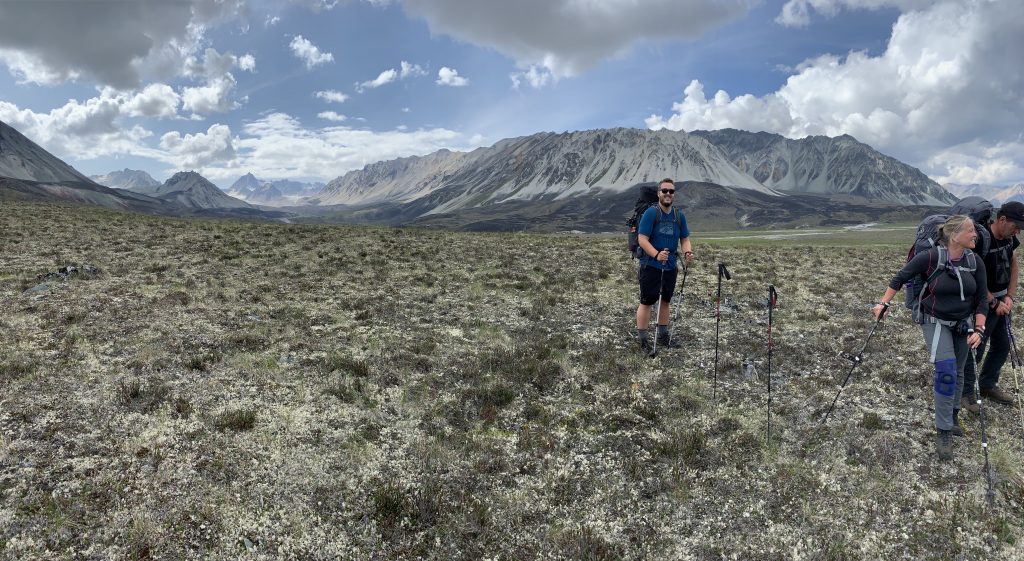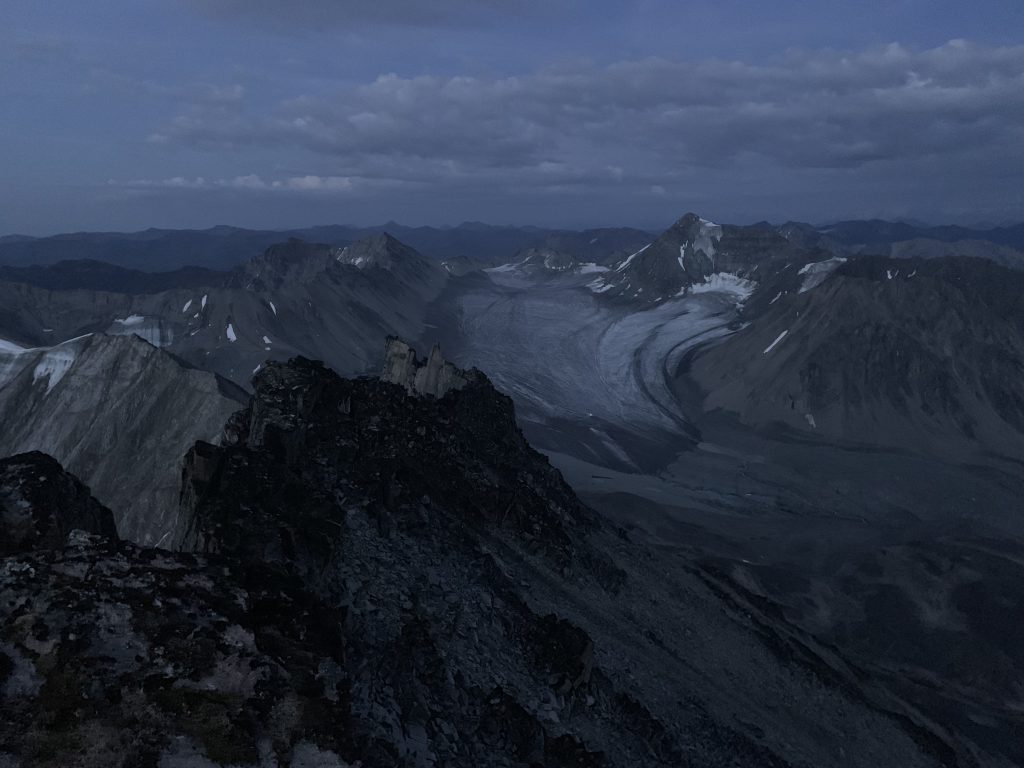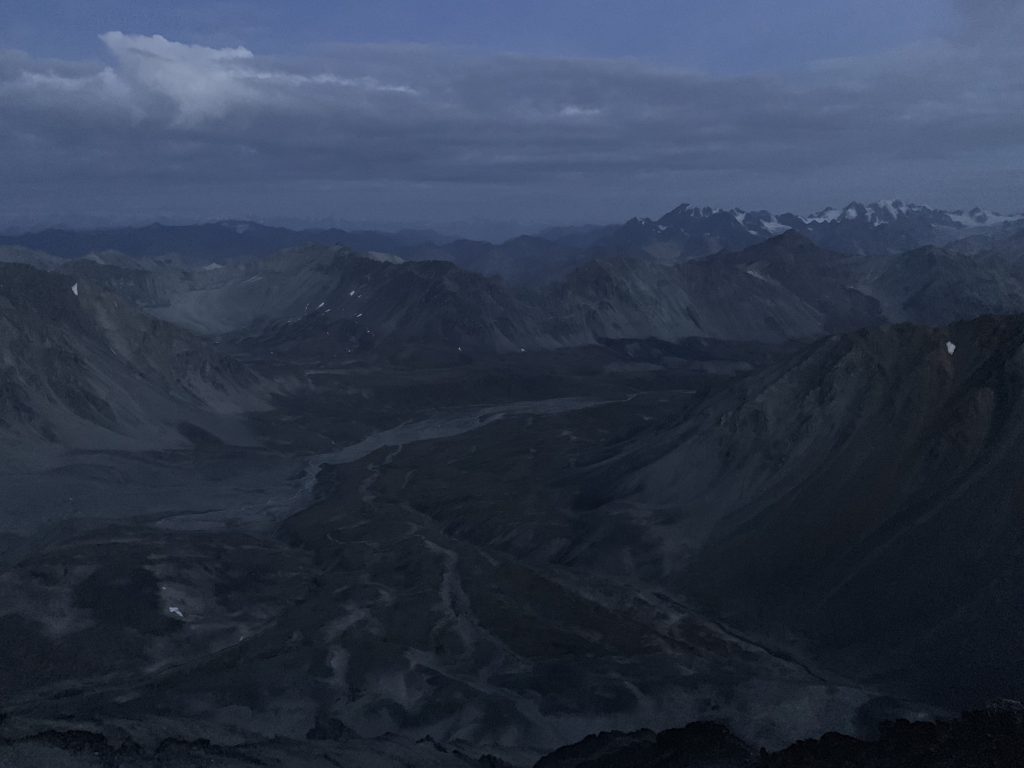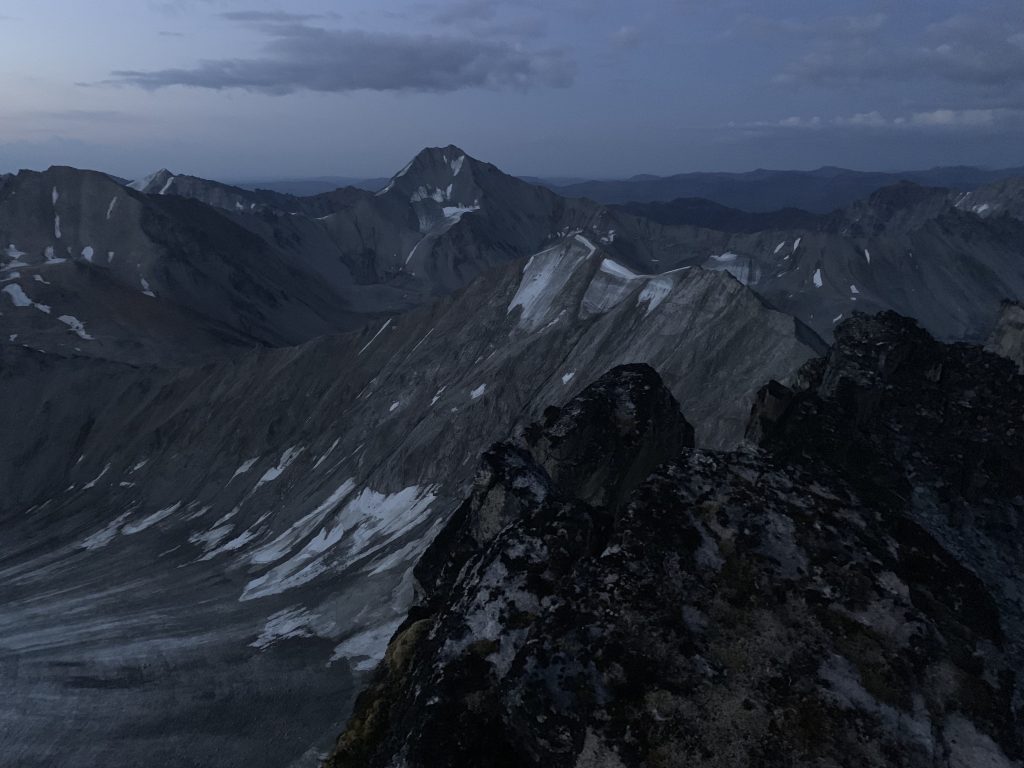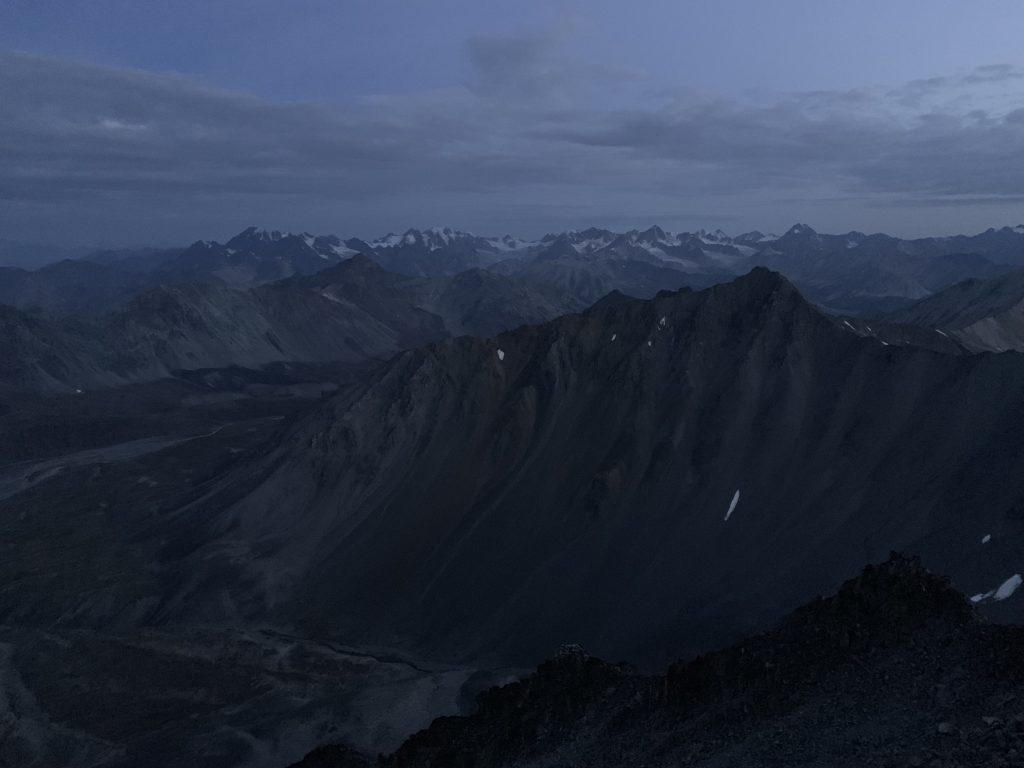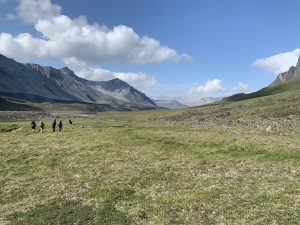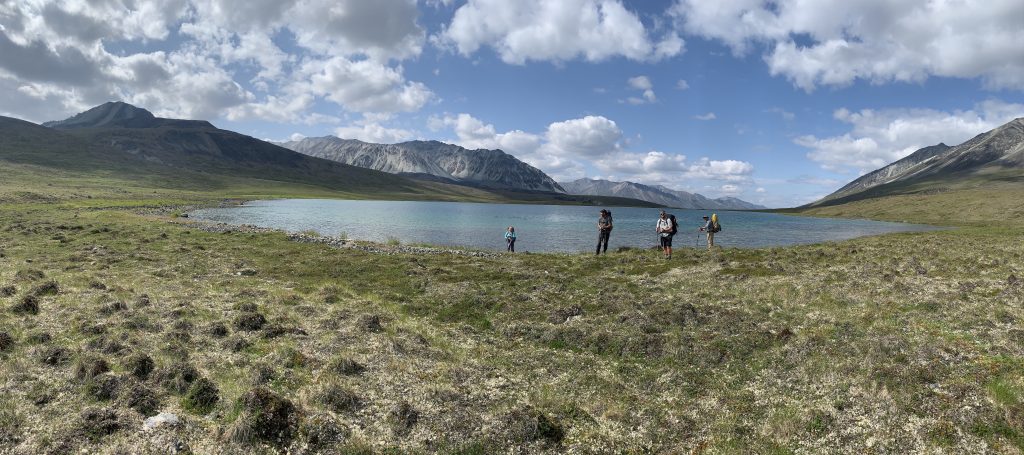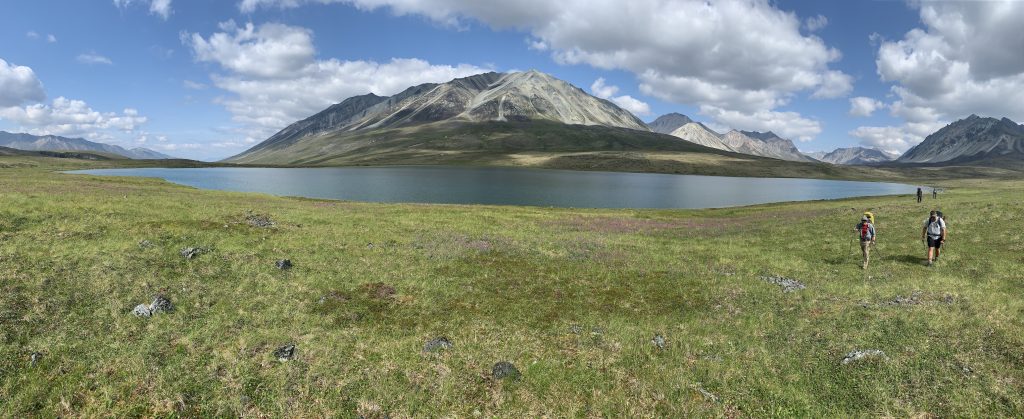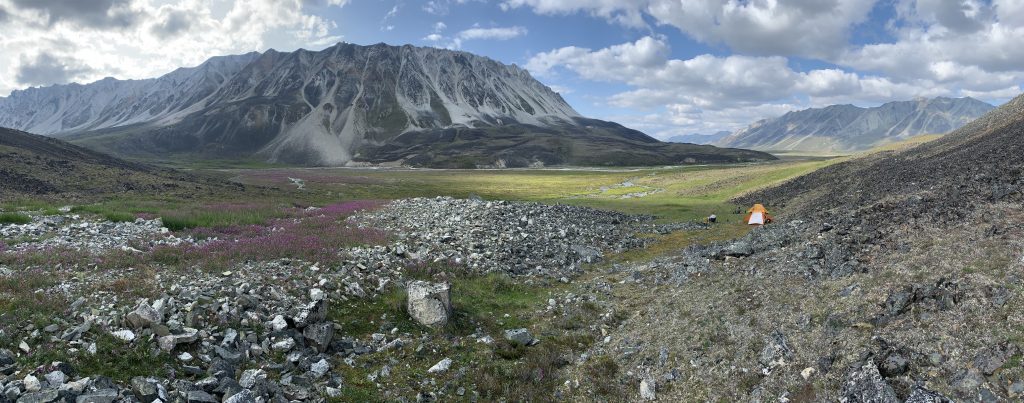What if it’s not just human beings that are created “in the image of God” but, rather, All of Creation is the Image of God?
Is it possible to harmonize the beyond-ancient, animistic worldviews of the countless indigenous cultures that sustained human spirituality (and facilitated human life in balance with the Earth and its Community of Beings) since time immemorial, with the relatively young worldviews of the Abrahamic faiths that dominate the modern world?
I think-feel it is, and it’s imperative. Spirituality is an essential element of being human. We rid ourselves of spirituality to our own despair. The spiritual dimension of being is more a part of our nature than the economical, the financial, or the mechanical dimensions of being that are so prevalent in the world today. However, it’s undeniable that the more recent organized religions (especially the more conservatively and fundamentally they’re adhered to) have been a source of immeasurable human suffering in terms of the divisions they’ve created (both inter and intra personally).
I think-feel the notion that humankind alone is “in the image of God” is dangerous and destructive. Why? It puts humanity at the pinnacle of a hierarchy of existence, and hierarchies are inherently exploitative. Beyond that, the notion that humanity is superior to the rest of Creation isn’t even worthy of being deemed infantile (my thoughts in this regard stem from another post, which can be found here). It’s a very young and immature notion.
Why is this notion (that humanity has dominion over the rest of Creation) beyond infantile? Because the anatomically modern human has existed for ~300,000 years, and for the vast majority of that existence (99.9% wouldn’t be an over exaggeration) place-based, indigenous, animistic worldviews were the human cosmology . A commonality amongst the varying indigenous animisms is that humanity is but one member of an incomprehensibly complex community of interconnected life. This cosmology, rooted in a reverence for all other members of the Community of Life, allowed humanity to live sustainably on the Earth in ways that are more characteristic of the symbiotic relationships other (nonhuman) species have with their habitats than the grossly unsustainable and destructive relationship modern industrial civilization (characterized by consumer capitalism and the insane economic ideology of infinite growth on a planet with finite resources) has with the biosphere.
For context, I’m currently teaching a class at UAA entitled Natural History Interpretation and Environmental Education. While we spend roughly half of the class learning the nuts and bolts of the subjects after which the course is titled, we spend the other half reading and reflecting on texts related to the underlying philosophies upon which an equitable natural history and outdoor-environmental education pedagogy should be built. Those texts are Becoming Animal and A Language Older Than Words.
In our classroom discussions (our book club meetings) themes (namely, whether humanity is solely created “in God’s image” and is at the top of a hierarchy of existence) related to the start of this post surfaced. One student expressed problems with these themes because he viewed them as clashing with his worldview. I didn’t initially understand, and perhaps in hindsight he was a bit hesitant to elaborate, but I wanted to understand and asked for clarification. He started by stating that he was probably in the minority because he believed in God, and the readings and discussions were incompatible with his view of God.
I still didn’t get where he was coming from. I stated that there are many perspectives on God, and that I didn’t understand how the reading was incompatible. Then, it emerged: he’s Christian (as if that should have ended my quest for clarification). Again, I responded that I didn’t understand the incompatibility. After all, I was raised Christian as well: baptized and confirmed into the Evangelical Lutheran Church (don’t be confused by “Evangelical” – this protestant denomination is relatively liberal-progressive as evidenced by the prominent role of women in the Church, ordination of LGBTQ clergy, sanctioning of same-sex marriage, and appreciation of figurative as opposed to literal interpretation of Scripture). Rather than clashing with the Christian worldview, to me, what we were reading and discussing in the class informed and evolved it – made it more relevant for its continued existence.
How do these notions, that all of Creation (not just humanity) is created in God’s image and humanity is not at the top of a hierarchy of Life, inform and evolve the Christian worldview? Well, let’s start by considering that the modern liberal-progressive Christian worldview sees women and LGBTQ individuals as equals in regard to Church roles and sanctions same-sex marriage. That wasn’t always the case for liberal-progressive Protestant denominations, and still isn’t the case for conservative (so-called) Christians – whose belief system remains dominated by patriarchy and makes life especially difficult for those that don’t conform to conservative norms.
How do we maintain the relevance of the Church, if it doesn’t evolve with the times to continue to serve the society and culture of which it’s a part? A Church that imposes a misfitted conformity upon the society and culture of which it’s a part is not relevant. A Church must evolve and adapt to maintain its relevance and continue to serve an ever-changing community, culture, and society. Otherwise, it should cease to exist because imposed conformity is dangerous and destructive (both inter and intra personally).
Since the notion that humanity alone is created “in God’s image” is not only infantile but doesn’t serve us well (in terms of the accompanying hierarchy that gives humans dominion over the rest of Creation and is associated with a problematic psychology of destructive exploitation), the Church needs to evolve and update such a notion in order to maintain its relevance.
As the Earth shouts louder and louder at humanity (just one, but perhaps the dominating [although note that dominating is what bullies do and is not a good trait], member of its Community of Life) to pay attention to the damage it’s afflicting upon its self (as a proper conception of the self should be rooted in the fact that we are very much a part of the Earth and composed of the same ingredients as all other parts of the Earth [albeit with a different recipe]), we are at a turning point.
Do we, as a species, move forward into the future further imperiling the survival of our species and many others while imposing needless suffering on future generations by continuing to uphold the fantasy that we are entitled to “dominion” over the rest of Creation? Or do we awaken ourselves to the intersectionality of the social, environmental, and spiritual decay that has resulted from the paradigm of (evolutionary or divinely ordained) human dominion over all other beings (that once included dominion of some human ethnicities over others)? The Christian priest and philosopher Thomas Berry posed this as a choice between “Technozoic” or “Ecozoic” eras, as we leave behind the Cenozoic era of the past 65 million years.
Besides, even if we were at the pinnacle of a hierarchy of existence and did have dominion over the rest of Creation, what kind of rulers are we? Currently, any objective assessment would determine us to be cruel and tyrannical ones. We should at least strive to be wise and benevolent rulers. Although, ideally there are no rulers, and we sit at a round table with representatives of the rest of Creation. The eye level relationship that comes from that (from us acknowledging our ignorance, ceasing to be the bully species, and seeking to learn once again from the other Beings with which we share this wondrous spaceship Earth) is how we really become wise (and deserve the title Homo sapiens, or wise man).
I think it’s obvious the direction the Good Lord (the great Jewish Shaman and Trickster) would want us to go with the Church that purports to be His, and the prominent (and perhaps previously un-climbed) summit deep in the Talkeetna Mountains that this trip report is about is named in recognition of that.
“You are the salt of the earth. But if the salt loses its saltiness, how can it be made salty again? It is no longer good for anything, except to be thrown out and trampled underfoot.” – JC
Chickaloon Pass area summer 2019 route map (the different colored lines are the different hikes we did): 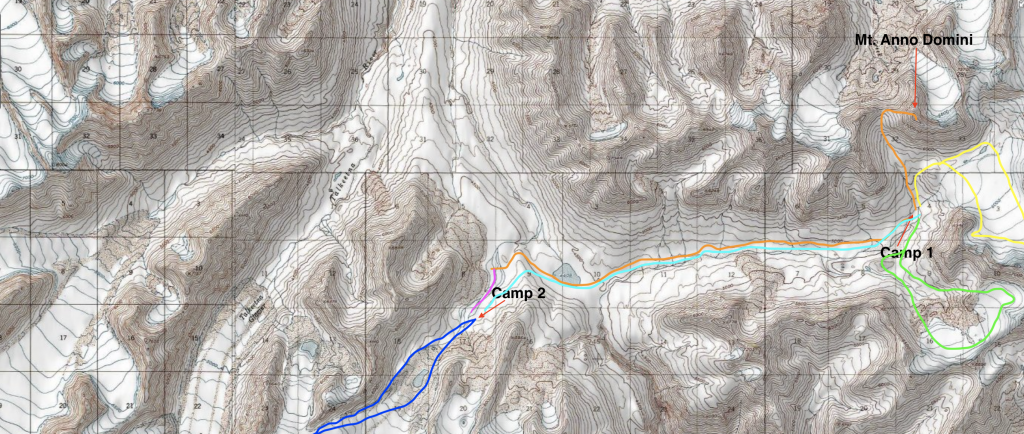
I spent July 18-23, 2019 deep in the Talkeetnas mountains with four clients. We were blessed with wonderful weather: copious amounts of sunshine and just a couple weak thunderstorms from afternoon buildup. Thanks to my two British and two Georgian clients, whose good Karma made this possible.
Big peaks of the area in the distance (including the so-called “Peak of Many Couloirs”):

On day one we hiked several miles up the large and prominent valley that’s east of what I’ve now heard referred to as the “Cunningham airstrip” to our camp for a few nights. Mike Meekin and Matt Keller dropped us and our gear at the airstrip via three 185 Skywagon loads. It was sad to hear about legendary Mike Meekin’s impending retirement. It was even sadder to hear that he thinks a heli operation will soon replace him. Helicopters make it too easy and, in my opinion, will set an excessive precedent.
The legendary Mike Meekin’s Skywagon: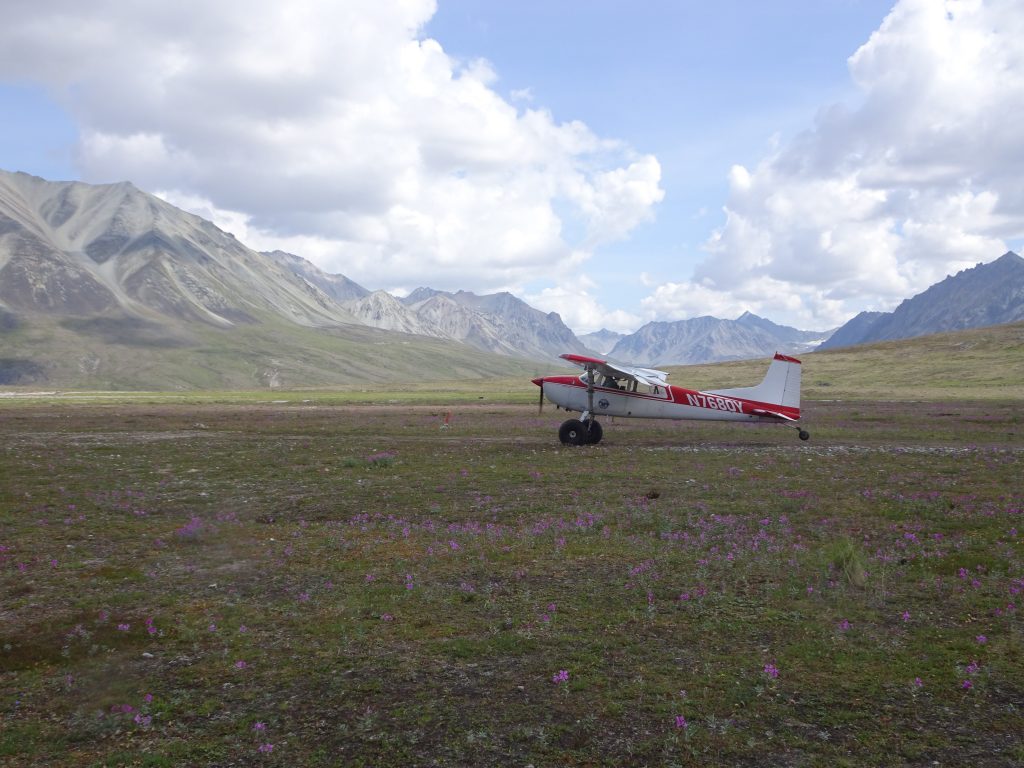
Our first camp, below and south of Mt. Anno Domini: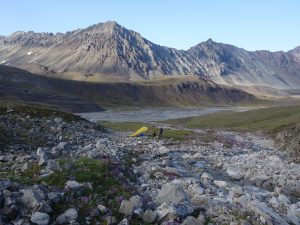
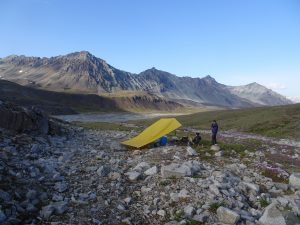
After feeding and putting my clients to bed, I set out late to bag the prominent 7600′ peak due north of our camp. With the magical midnight sun lighting the way, I made it to the north summit after midnight and the south summit shortly before 1am. I’m not sure which is the tallest. The easier to reach north summit required a bit of class 3+/4- scrambling, and the more difficult to reach south summit required more 4th class. The rock is granite. It’s even more broken and chossy than the Talkeetna granite to the west, but is much more solid than the more volcanic Talkeetna rock to the south and east. It’s a hell of a lot better than friable Kenai shale, and is better than some Chugach conglomerate – but worse than where the Chugach choss is actually “good.”
Hiking above camp up to Anno Domini: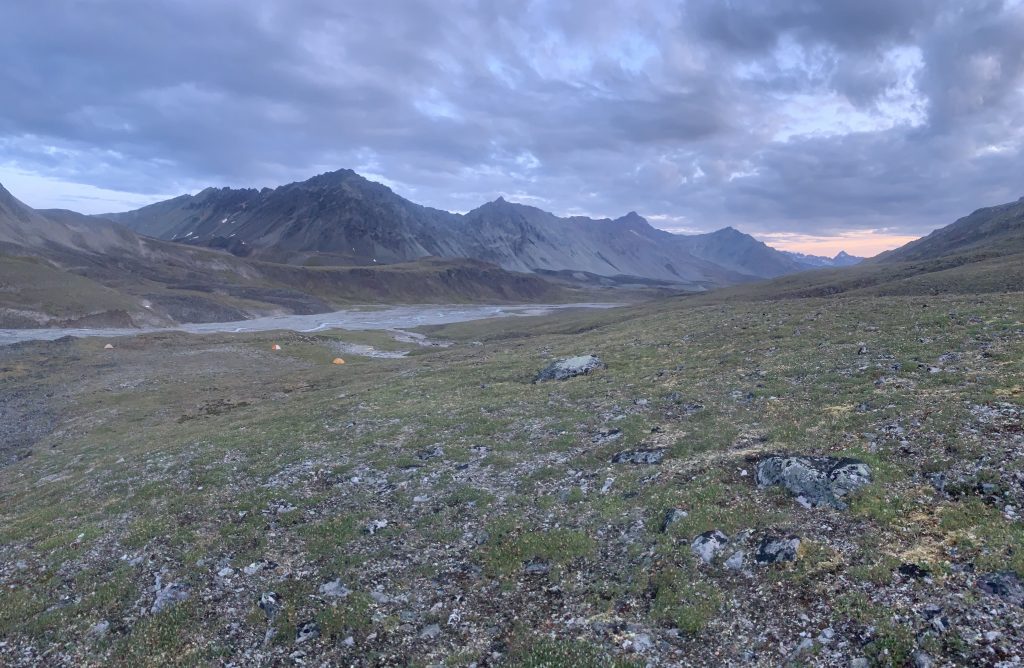
This cheeky caribou paid us a visit on day two (staring us down while he pooped next to our kitchen tarp), as we awoke to a beautiful morning: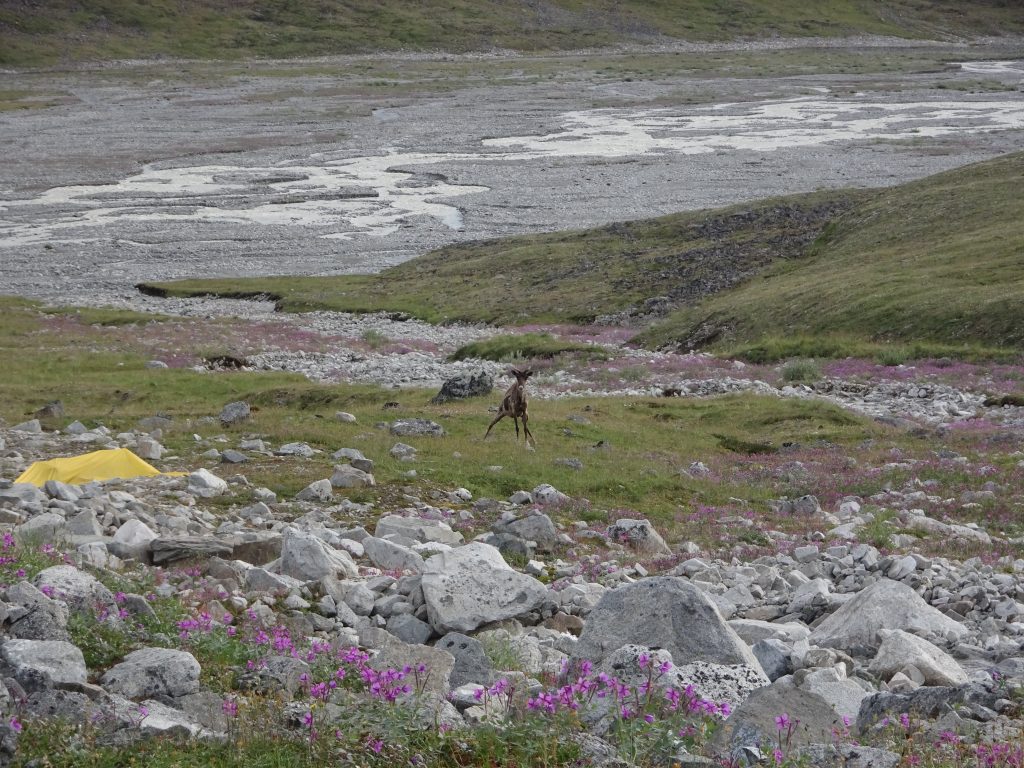


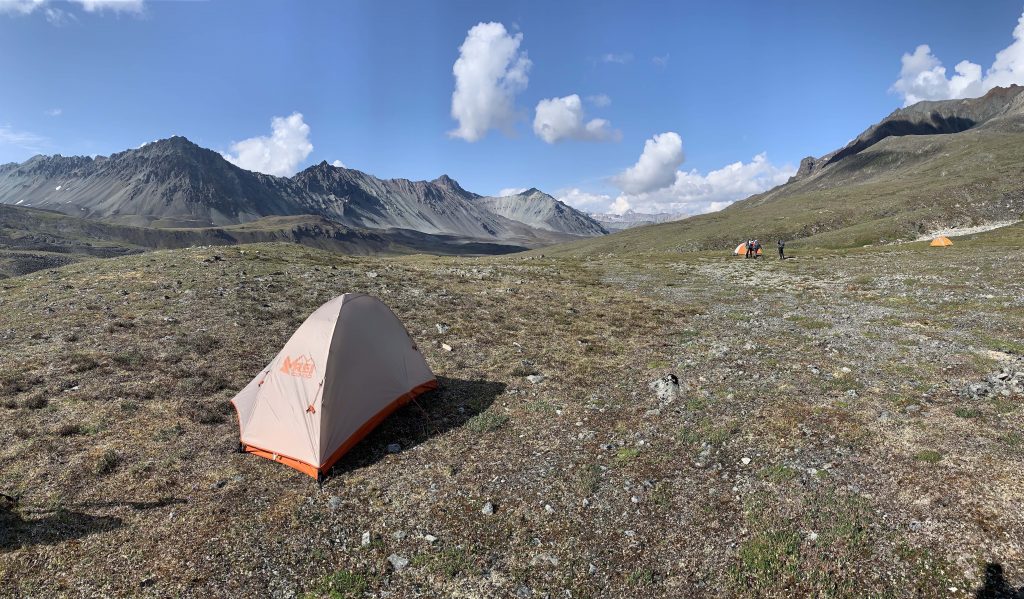
We went for a sweet glacier hike on day two, climbing up to a pass overlooking the Oshetna River: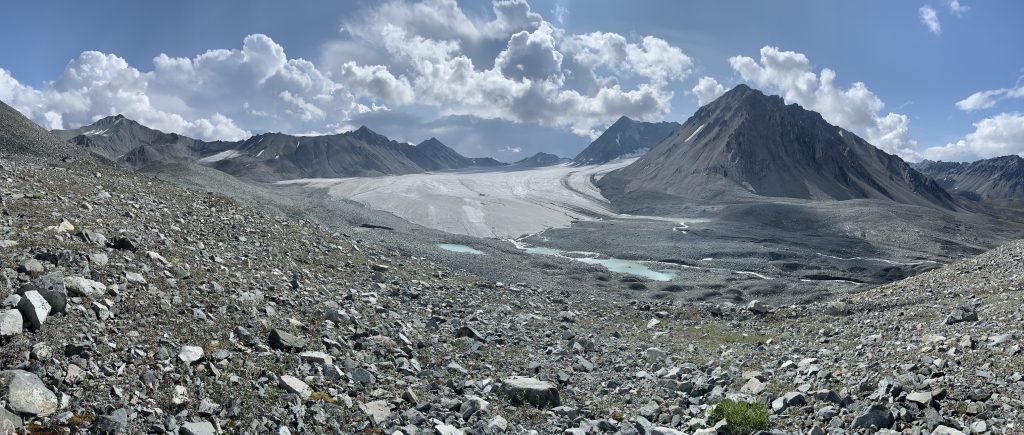


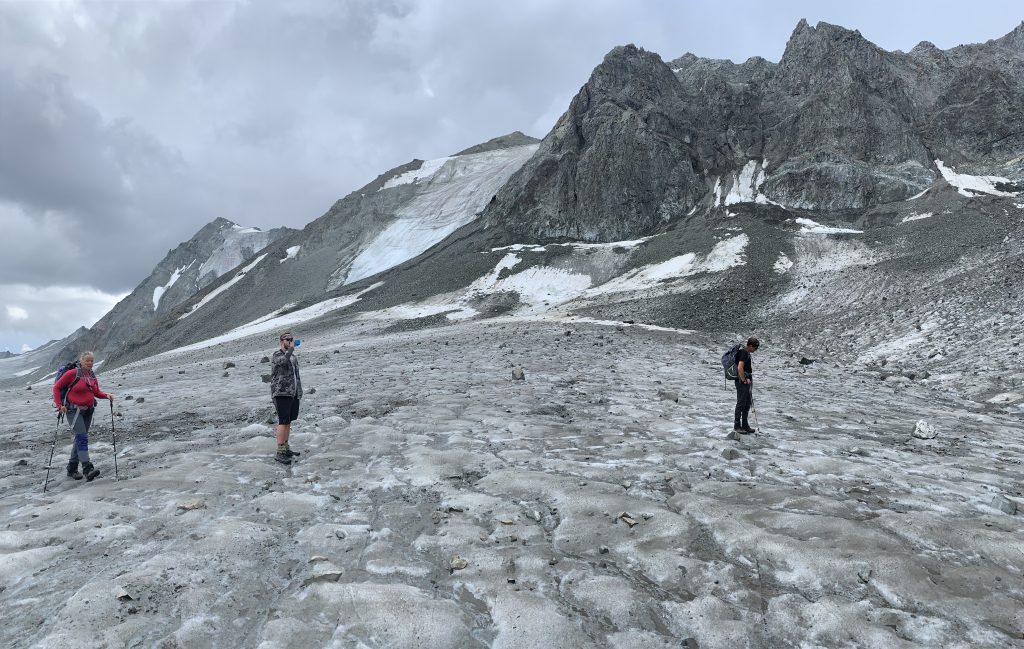
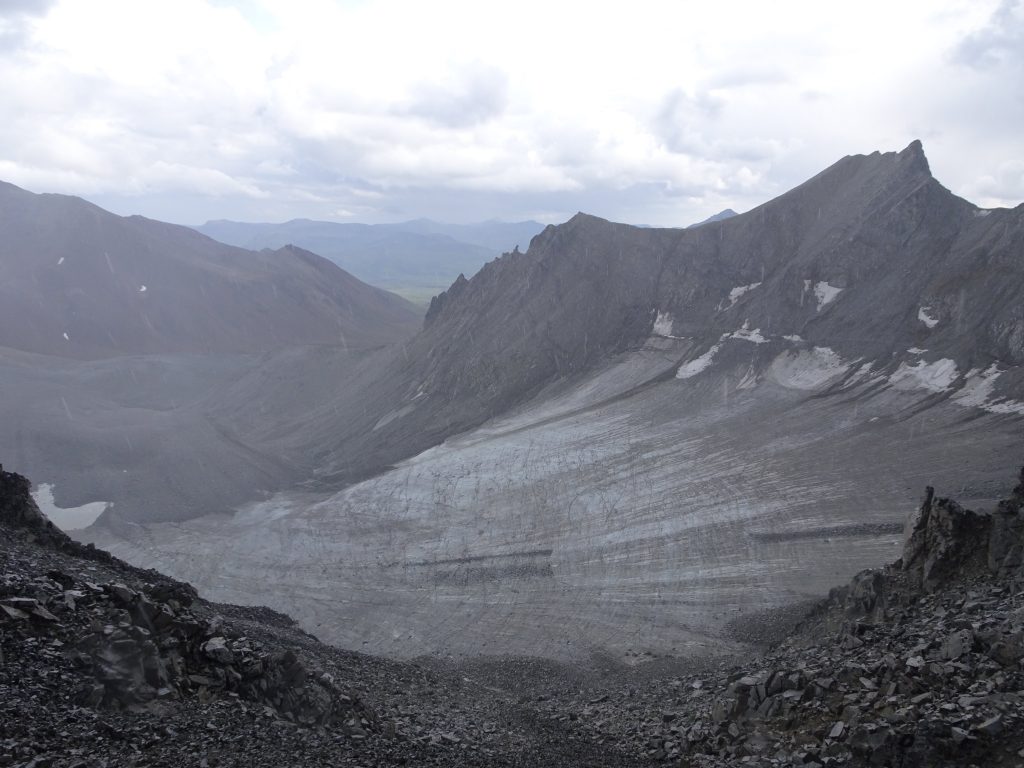
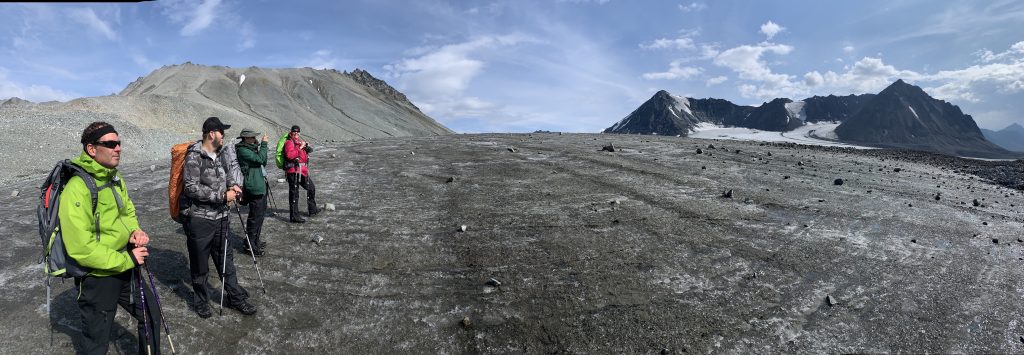

On day three we went for another great loop hike to another unnamed glacier. It’s on this day that we defined the trekking in this zone as “rubble-rousing” (the loose rubble is endless):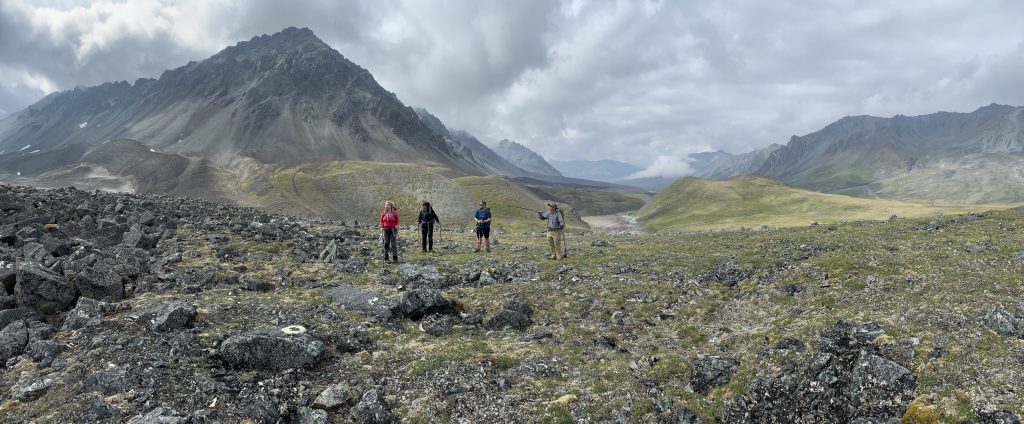
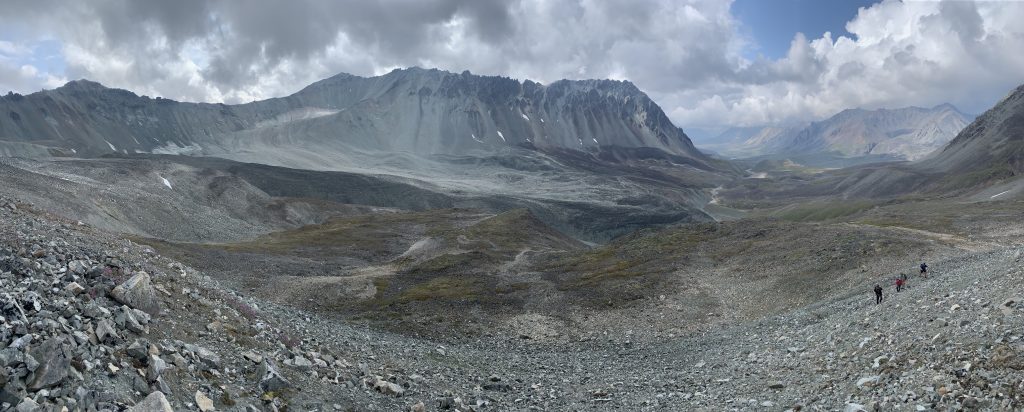

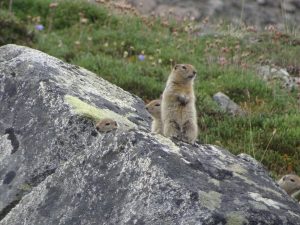

I took an opportunity to nap in order to recover the late night climb up AD:
The river rose over the course of the day leading to the most challenging stream crossing of the trip (not that deep but very cold and swift with numerous braids):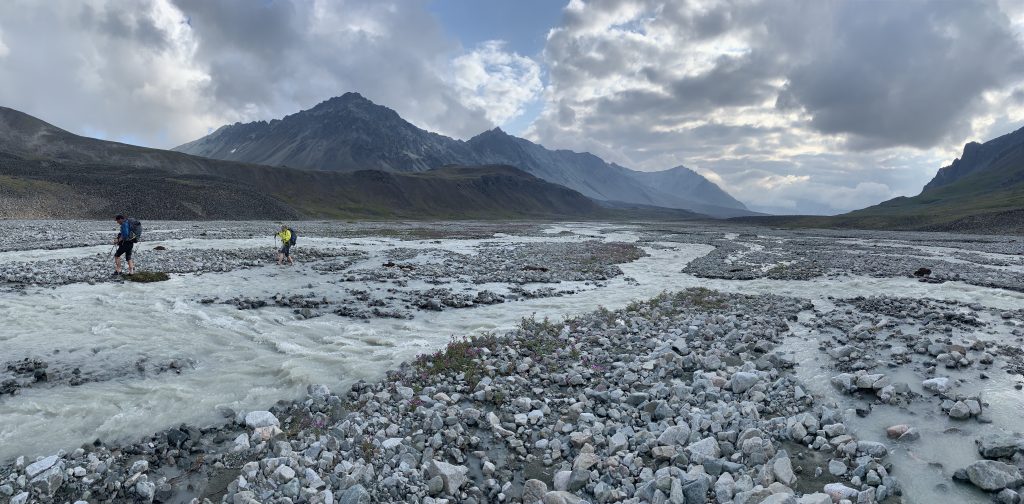
Another sublime night at camp (the contrast between the British and Southern accents of my clients was very entertaining):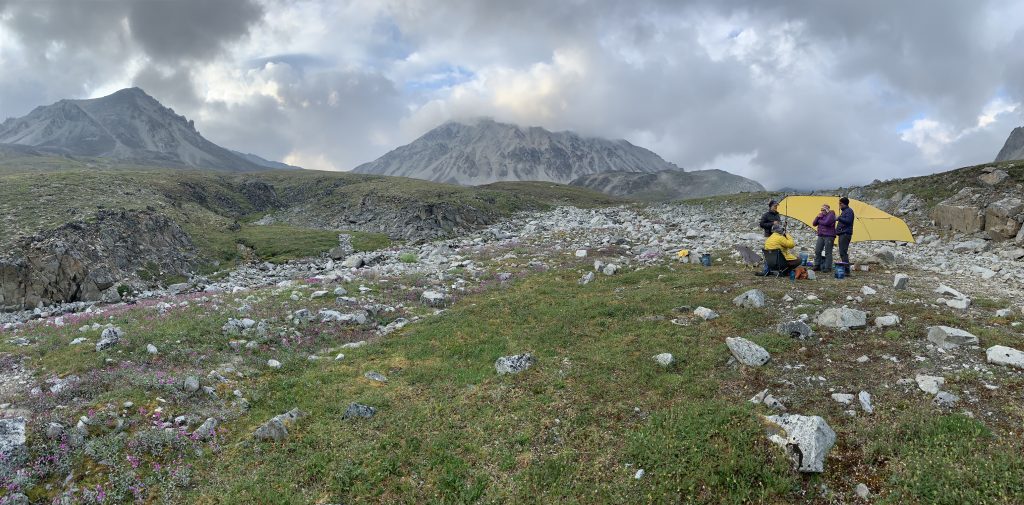
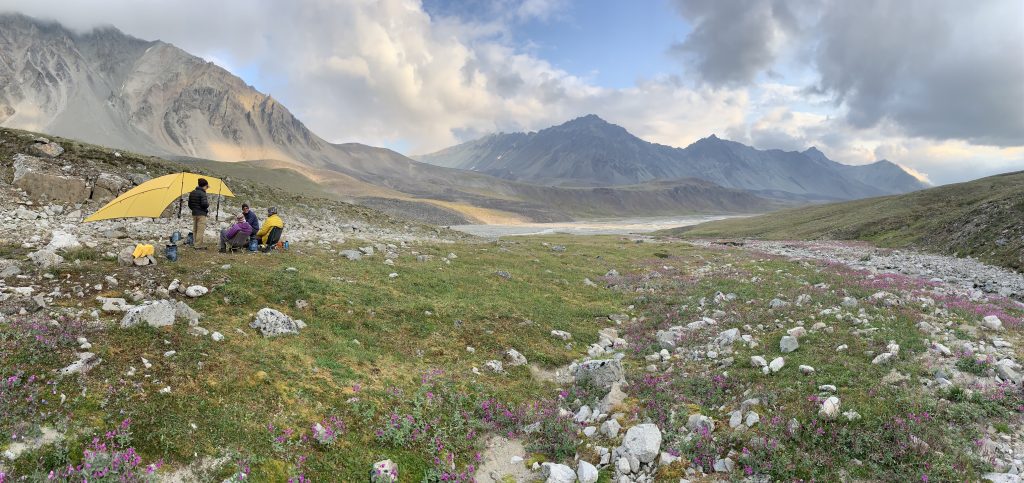
On day four we headed back towards the airstrip to explore the glaciated valley west of the airstrip:
Day five’s hike was the most spectacular, and full of eye candy:
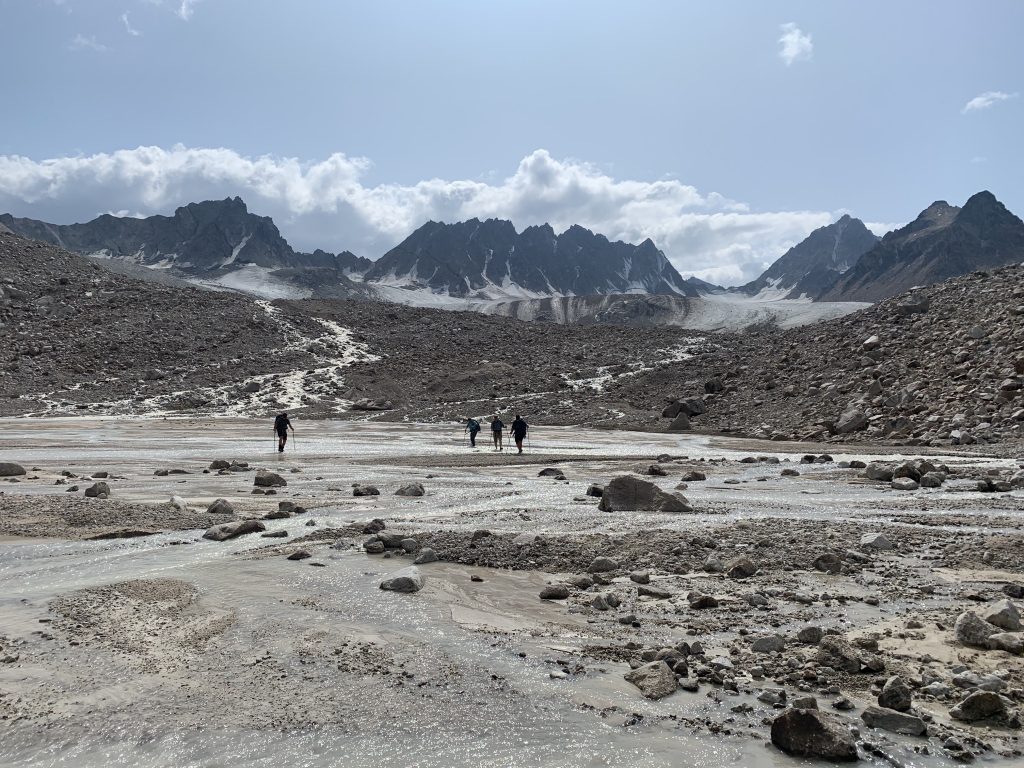
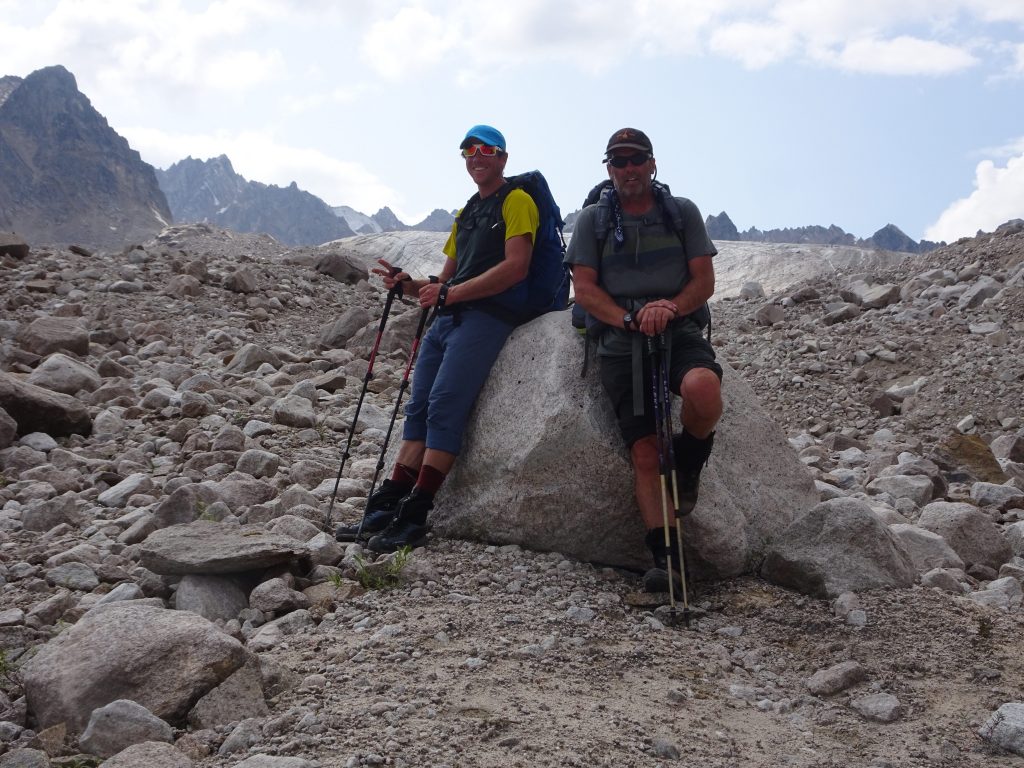

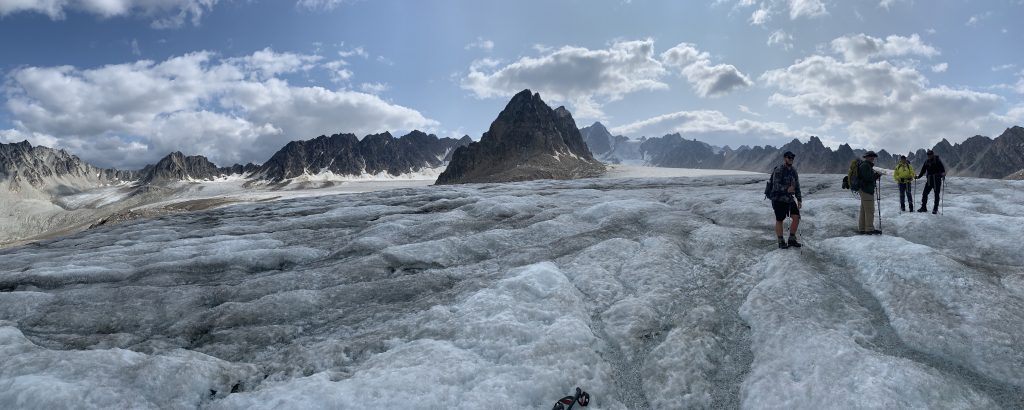
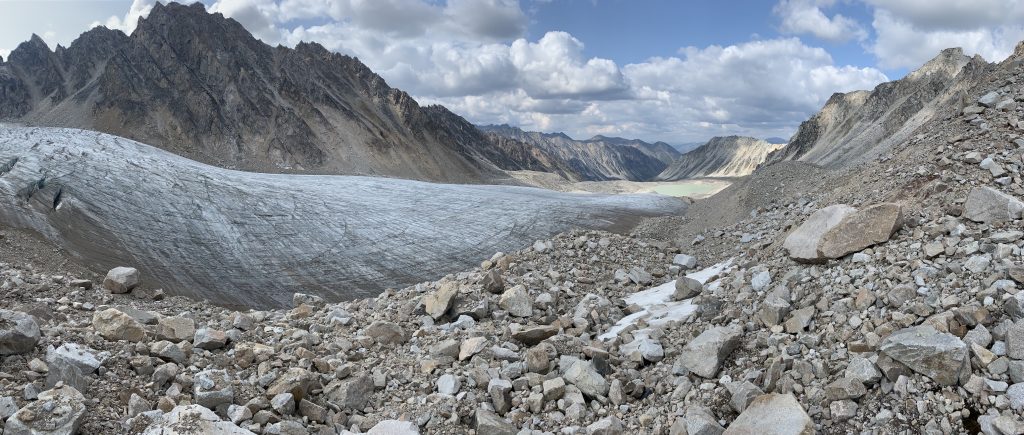
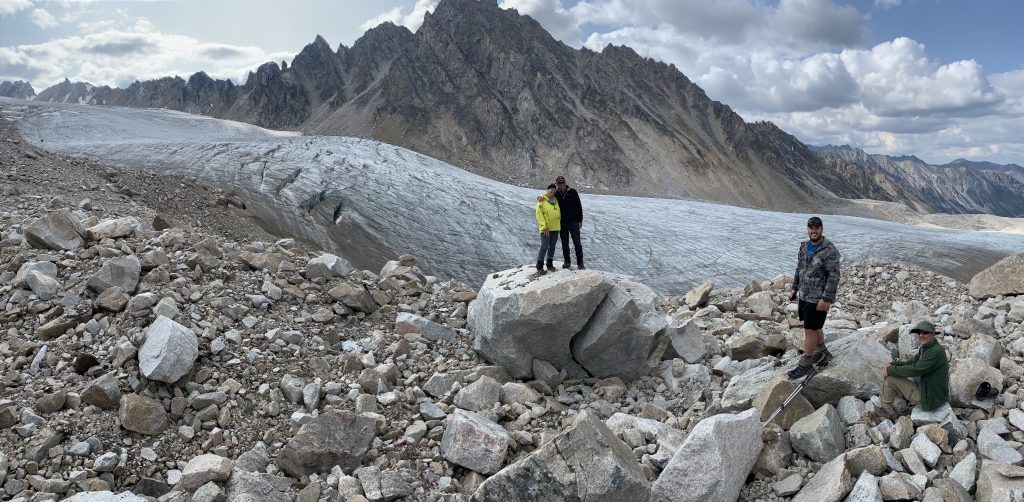

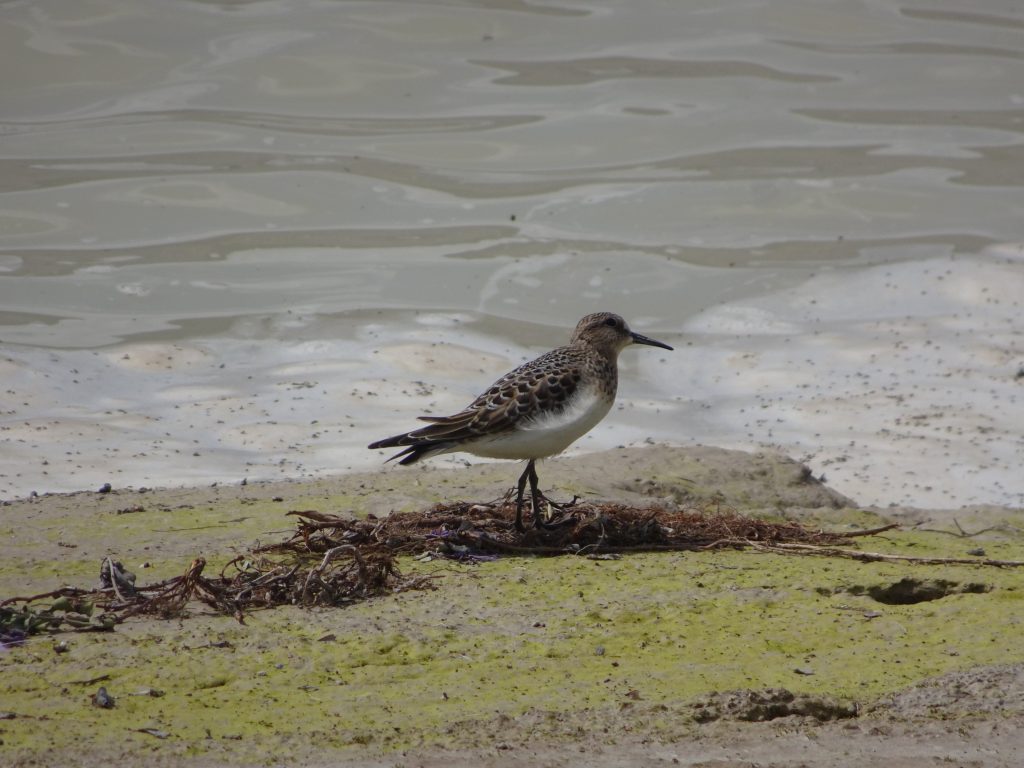
Day six consisted of a short hike to the airstrip, and amazing views on the flight back to Meekin’s place:
Video:

